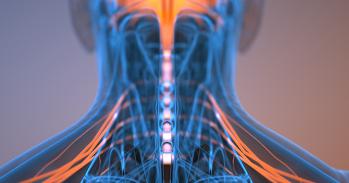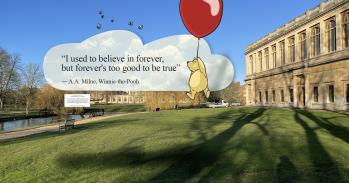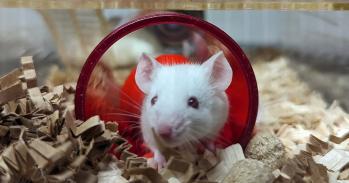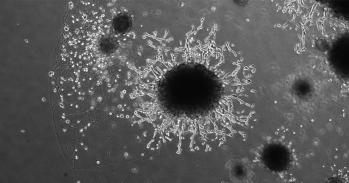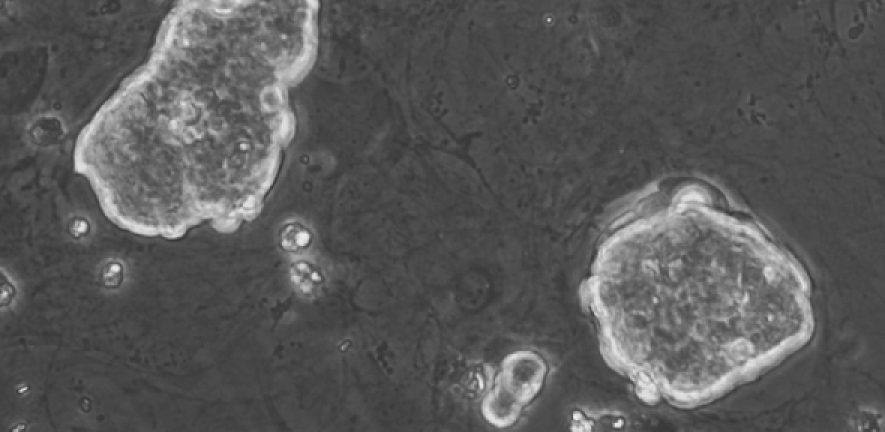
Scientists at the University of Cambridge have for the first time shown that it is possible to derive from a human embryo so-called ‘naïve’ pluripotent stem cells – one of the most flexible types of stem cell, which can develop into all human tissue other than the placenta.
Scientists at the University of Cambridge have for the first time shown that it is possible to derive from a human embryo so-called ‘naïve’ pluripotent stem cells – one of the most flexible types of stem cell, which can develop into all human tissue other than the placenta.
Until now it hasn’t been possible to isolate human naïve stem cells, even though we’ve had the technology to do it in mice for thirty years – leading some people to doubt it would be possible
Ge Guo
As well as a potential source of stem cells for use in regenerative medicine, the technique could open up new avenues of research into disorders such as Down’s syndrome.
The ability to derive naïve stem cells has been possible for over thirty years from mouse embryos, using a technique developed by Sir Martin Evans and Professor Matthew Kaufman during their time at Cambridge, but this is the first time this has been possible from human embryos.
Human pluripotent stem cells for use in regenerative medicine or biomedical research come from two sources: embryonic stem cells, derived from fertilised egg cells discarded from IVF procedures; and induced pluripotent stem cells, where skin cells are reprogrammed to a pluripotent form. However, these cells are already “primed” for differentiation into specific cell types. In contrast, all instructions have been erased in naïve cells, which may make it easier to direct them into any cell type of interest.
Recently naïve-like human induced pluripotent stem cells have been created by reprogramming but it has been unknown whether they can also be obtained directly from the human embryo.
When an egg cell is fertilised by a sperm, it begins to divide and replicate before the embryo takes shape. Around day five, the embryonic cells cluster together and form a structure called the ‘blastocyst’. This occurs before implantation into the uterus. The blastocyst comprises three cell types: cells that will develop into the placenta and allow the embryo to attach to the womb; and cells that form the ‘yolk sac’, which provides nutrients to the developing foetus; and the ‘epiblast’ comprising the naïve cells that will develop into the future body.
In research published today in the journal Stem Cell Reports, scientists from the Wellcome Trust-Medical Research Council Cambridge Stem Cell Institute managed to remove cells from the blastocyst at around day six and grow them individually in culture. By separating the cells, the researchers in effect stopped them ‘talking’ to each other, preventing them from being steered down a particular path of development.
“Until now it hasn’t been possible to isolate these naïve stem cells, even though we’ve had the technology to do it in mice for thirty years – leading some people to doubt it would be possible,” explains Ge Guo, the study’s first author, “but we’ve managed to extract the cells and grow them individually in culture. Naïve stem cells have many potential applications, from regenerative medicine to modelling human disorders.”
Naïve pluripotent stem cells in principle have no restrictions on the types of adult tissue into which they can develop, which means they may have promising therapeutic uses in regenerative medicine to treat devastating conditions that affect various organs and tissues, particularly those that have poor regenerative capacity, such as the heart, brain and pancreas.
Dr Jenny Nichols, joint senior author of the study, says that one of the most exciting applications of their new technique would be to study disorders that arise from cells that contain an abnormal number of chromosomes. Ordinarily, the body contains 23 pairs of identical chromosomes (22 pairs and one pair of sex chromosomes), but some children are born with additional copies, which can cause problems – for example, children with Down’s syndrome are born with three copies of chromosome 21.
“Even in many ‘normal’ early-stage embryos, we find several cells with an abnormal number of chromosomes,” explains Dr Nichols. “Because we can separate the cells and culture them individually, we could potentially generate ‘healthy’ and ‘affected’ cell lines. This would allow us to generate and compare tissues of two models, one ‘healthy’ and one that is genetically-identical other than the surplus chromosome. This could provide new insights into conditions such as Down’s syndrome.”
The research was supported by the Medical Research Council, Biotechnology and Biological Sciences Research Council, Swiss National Science Foundation and the Wellcome Trust.
Reference
Guo, G et al. Naïve pluripotent stem cells derived directly from isolated cells of the human inner cell mass; Stem Cell Reports; e-pub 3 March 2015. DOI: 10.1016/j.stemcr.2016.02.005

The text in this work is licensed under a Creative Commons Attribution 4.0 International License. For image use please see separate credits above.

